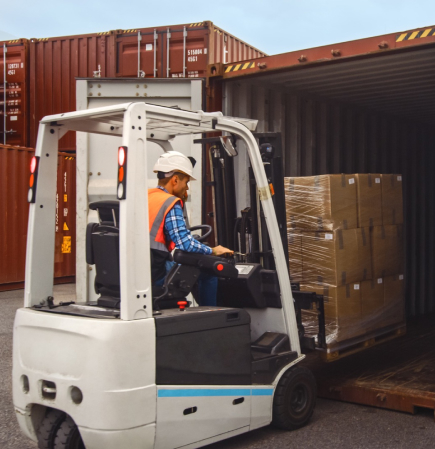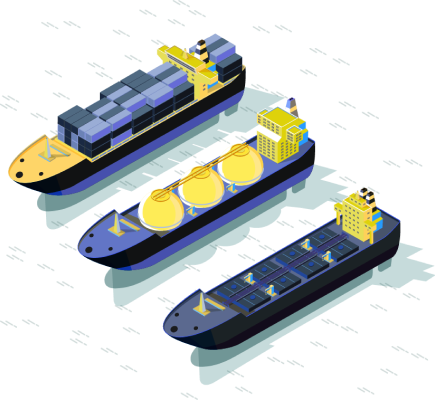Full Container Load
When you are considering using a full container load (FCL) for loading your next important shipment, you should first consider some of the unique features of FCL shipping.
One full container load may be more beneficial to your company compared to a less than full load. These freight services provide greater security for your goods and reduce the risk of damage or loss. FCL freight shipments also generally have a shorter transit time compared to less than container load shipments. This is because there are fewer port stops and handling points. When you are working with container load transport, consider your options. Doing your research can help you figure out if FCL container freight shipping is right for you.
Request a Consultation
Fill out the following form and our team will contact you to discuss your individual logistics needs.
Personal Service
Online Tracking
Global Coverage
What is a full container load?
A full container load (FCL) refers to a freight forwarder shipment that completely fills a shipping container, typically a 20-foot or 40-foot container. This is intended for a single consignee. In other words, a full container load is a shipment in which the entire container is dedicated to a single importer or exporter and their cargo.
The advantage of a full container load is that it provides greater control and security over the shipment. Since the container is packed with goods from a single consignee, there is no need to share the container with other shippers, which means the cargo is less likely to be damaged or lost. This also makes it easier to track the shipment and ensure that it arrives at its intended destination.
Another benefit of a full container load is that it can be more cost-effective than other shipping options. Because the entire container is dedicated to a single shipment, it eliminates the need to pay for space that is not being used. Additionally, since a full container load does not require as much handling as other types of shipments, it can help to reduce the risk of damage or loss, which can result in lower insurance costs.
Our Clients




What is the size of a full container load?
The size of a full container load varies depending on the type of container being used. The most common sizes are 20-foot and 40-foot containers. A 20-foot container can typically hold up to 10 standard pallets of goods, while a 40-foot container can hold up to 22 standard pallets. The exact dimensions of each container may vary slightly depending on the manufacturer.
Testimonials
What Our Clients Say
What is FCL and LCL?
The main difference between a full container load and a less than container load (LCL) is the amount of cargo being shipped. A full container load is a shipment in which an entire shipping container, typically a 20-foot or 40-foot container, is dedicated to a single consignee and their cargo. On the other hand, a less than container load is a shipment in which the cargo does not fill an entire container and is instead consolidated with other shipments to fill the container.
FCL shipments offer greater control, security, and cost savings compared to LCL shipments, but they are typically used for larger shipments. LCL shipments offer greater flexibility and cost savings for smaller shipments, allowing multiple shippers to share the same container and reduce transportation costs.


What is the cost of a full container load?
The cost of a full container load (FCL) depends on several factors, including the origin and destination of the shipment, the size and type of container being used, and the type of cargo being shipped. FCL shipping rates are typically calculated based on a flat rate per container, regardless of whether the container is fully loaded or not. This means that the cost of a full container load may vary depending on the container size and the destination, but it does not depend on the actual amount of cargo being shipped. In addition to the flat rate, FCL shipments may also be subject to additional charges, such as port handling fees, customs duties, and insurance costs.
A reputable shipping company, such as Dedola, provides accurate and transparent pricing information and helps navigate the complexities of international shipping. A full container load is an efficient and cost-effective way to ship large quantities of goods across long distances. It offers greater control, security, and cost savings compared to other shipping options, making it a popular choice for many importers and exporters. Speak to Dedola about the container loads for your next FCL shipment. If the container sizes should be larger and your cargo occupies a much larger space, you may need FCL shipping. Large cargo should preferably go in one shipper to minimize the cost. However, you can discuss the shipping terms and whether one shipper is better than different shipments in terms of cost. Instead of multiple shipments and containers, you may want to consider the exclusive use of one container. Speak to our transportation crew about your next delivery to learn more about how your next shipment can be loaded to your advantage.
Advantages of Full Container Load (FCL) Shipping
Cost savings
FCL shipping maximizes container capacity, resulting in significant cost savings compared to other options.
Efficiency
FCL shipping streamlines the transportation process by consolidating a large volume of cargo into a single container, reducing handling and transfers.
Control and security
FCL provides greater control and security as the entire container is dedicated to the shipment, minimizing the risk of damage or loss from other cargo.
Frequently Asked Questions
About our Ocean Freight Forwarding Services
We know how critical your shipment is to your business. Here are some of the questions that we’ve heard in our over four decades in the industry:
Can you calculate my pricing for a shipment?
Yes. If you have the information about the weight and bulk of your items, you can ask for a quote.
What ports/countries do you serve?
Yes. If you have the information about the weight and bulk of your items, you can ask for a quote.
Certifications & Affiliations






